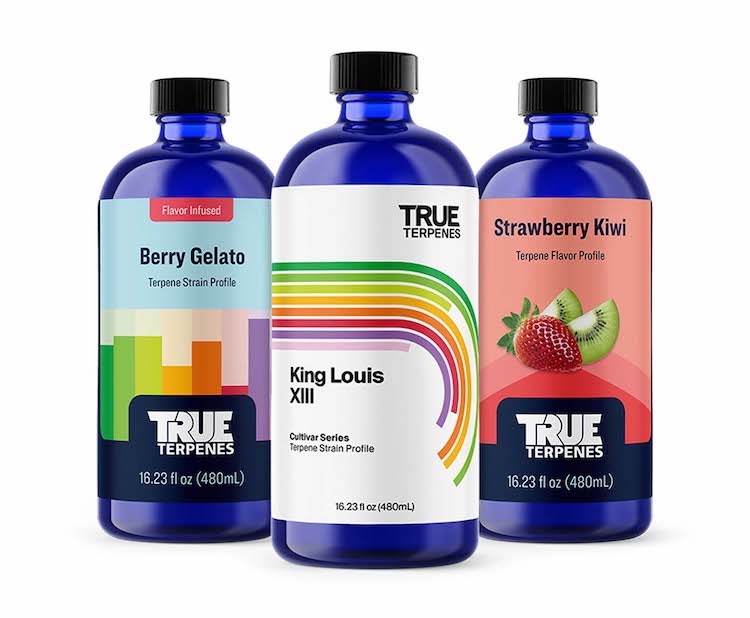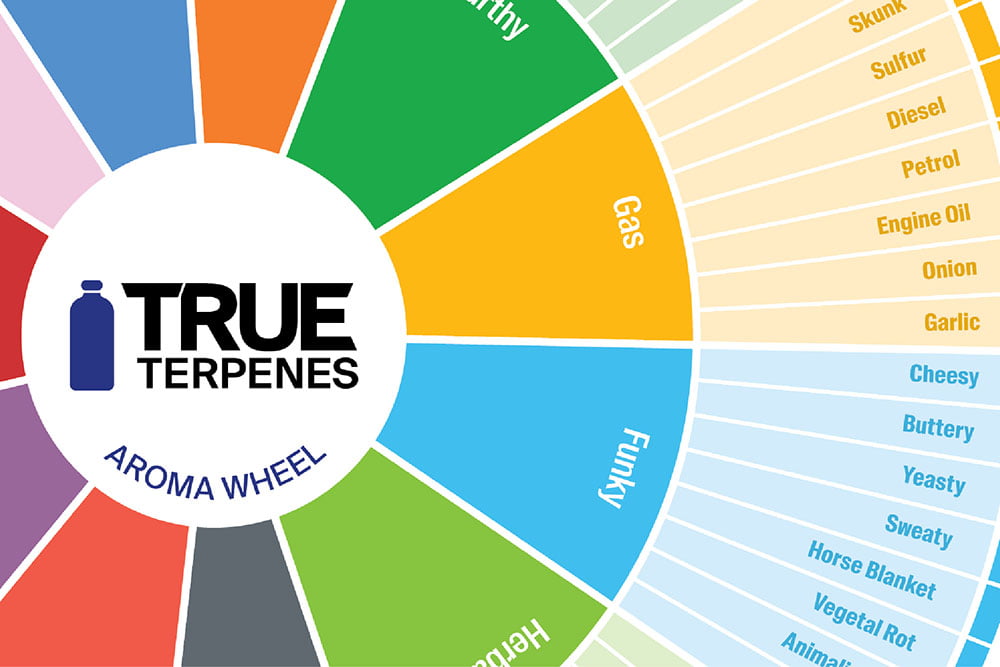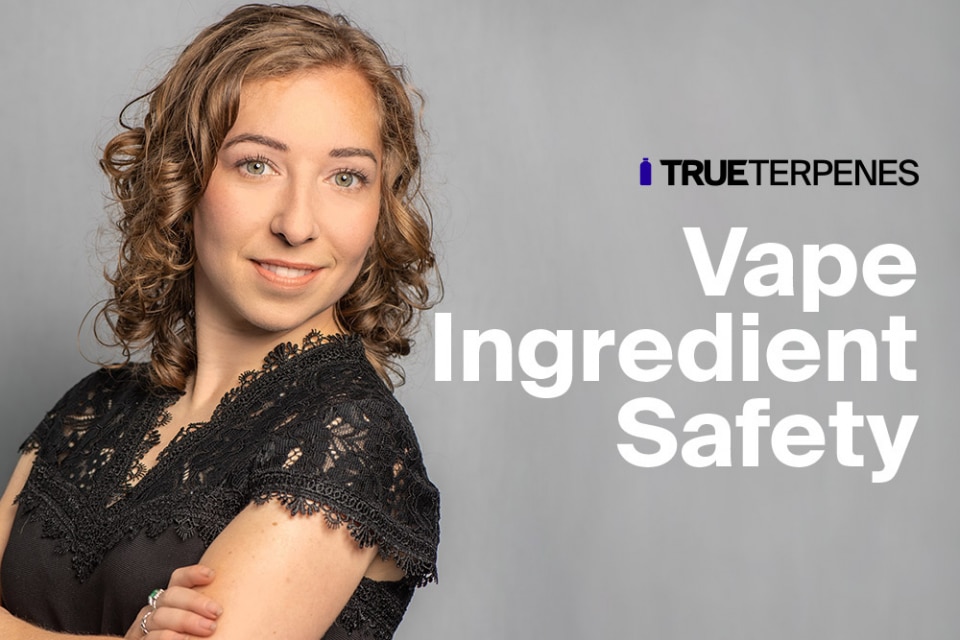March 26, 2024
How to Use Terpenes

What Are Terpenes?
Terpenes comprise a diverse class of organic compounds present in many plants, fungi, and cannabis. These aromatic molecules are responsible for the distinct scents and flavors associated with certain strains and their wide range of chemotypes that offer particular experiences with cannabis products. Combined with cannabinoids and flavonoids, terpenes also help make up the triad that is known as the “Entourage Effect”.
Scientists have already identified over two hundred unique terpenes in cannabis, with surely more to be discovered in time. They are also frequently used to enhance all kinds of things, from vapes and concentrates to edibles, pre-rolls, and much more.
Beyond their sensorial appeal to cannabis consumers, terpenes play a crucial role in nature by acting as a defense mechanism, attracting pollinators, and even possessing potential therapeutic attributes. In plants, they’re typically present only in minute quantities, but when collected and purified in aggregate, they become a low-viscosity liquid that is extremely useful for many applications.
With their complex chemical structures and myriad biological functions, terpenes have garnered significant interest from industry operators, researchers, and end users alike. Savvy cannabis and hemp processors have also discovered that deploying raw terpenes in their product development efforts gives them enormous latitude to easily engineer new, competitive SKUs.
While the word terpene was originally coined in the late 1800s by a German chemist named August Kekule, their commercial applications have not been well understood until fairly recently. A handful of terpene categories are denoted by the number of carbon atoms they possess. The most common ones found in cannabis and hemp are monoterpenes (such as myrcene) and sesquiterpenes (beta-caryophyllene, humulene). Of the two, monoterpenes tend to be more volatile and, therefore, delicate. Some terpenes are technically known as “terpenoids” because they contain additional oxygen molecules, with linalool being among the most commonly found.
The immense array of different terpene/terpenoid chemical compositions enables laboratories and manufacturers to create specialty profiles that are truly custom-tailored for their buyers. In this exclusive True Terpenes article, we’ll walk you through how your business can leverage its potential to make almost any cannabis or hemp product imaginable better.
How Terpenes are Used in Cannabis and Hemp Products
Terpenes are safely able to be infused into just about everything when it comes to cannabis and hemp, often without specialty or overly expensive equipment. They impart highly marketable improvements from taste to flavor and even effects when done properly. One study that evaluated how cannabis purchasers make buying decisions found that “perceived product characteristics, quality, and price” were among the most important factors, regardless of gender. Terpenes can be utilized to augment all of those aspects to increase end SKU sellability, as we demonstrate below.
- How to Use Terpenes with Vapes
- How to Use Terpenes with Infused Pre-Rolls
- How to Use Terpenes with Infused Cannabis and Hemp Flower
- How to Use Terpenes with Concentrates and Extracts
- How to Use Terpenes with Edibles
- How to Use Terpenes with Infused Beverages
- Other Terpene Product Applications
How to Use Terpenes with Vapes
What are Vapes?
Vapes, aka vaporizer cartridges, are small, concentrate-filled containers that are joined with a heating element to instantly decarboxylate cannabinoids for inhalation. They’re discrete, portable, and very easy for processors to customize. For these reasons, they’re also among the most popular non-dried flower products on the market. Vapes can be made from many different types of cannabis oils, such as distillate, CO2, live resin, and even live rosin. Best of all, terpenes can be added to instantly improve a vape’s flavor and sales potential.
How to Use Terpenes in Vapes to Grow Your Business
In the bustling world of dispensaries, making your vapes stand out demands innovation in flavor and trendsetting strains. Here’s how you can harness the power of terpenes to give your products an edge:
- Infuse botanical terpenes into your vape offerings to satisfy the craving for novel taste experiences and functional benefits.
- Combine the raw authenticity of live resin with richly flavored Infused Strains for a premium, taste-intensive vape experience.
- Develop a line infused with live resin, offering the complete spectrum of cannabis flavors while also providing the synergistic benefits of the Entourage Effect.
- With just one large-scale batch of bulk distillate—be it THC or CBD—you can roll out an array of new, buzz-worthy strains to keep your lineup fresh and exciting.
How to Use Terpenes with Infused Pre-Rolls
What are Infused Pre-Rolls?
Infused pre-rolls are cannabis joints or blunts that include additional potency and or flavor enhancements, such as live resin, live rosin, bubble hash, or dry sift. By adding one or more of these products into joints plus terpenes, operators can make their pre-rolls more attractive to consumers and increase their prices. With modern automation, terpene-enhanced pre-rolls are easy to make and offer a distinct point of differentiation from the competition.
How to Use Terpenes in Infused Pre-Rolls to Grow Your Business
Tap into a rapidly expanding market niche by introducing terpene-infused pre-rolls — a sensory delight from the initial taste to the final puff. Here’s how you can harness the appeal of terpenes to elevate your infused pre-rolls and grow your business:
- Craft live resin-infused pre-rolls that hit the sweet spot of current market dynamics, addressing the demand for innovative and potent products.
- Craft a high-end, terpene-concentrated pre-roll line that offers heightened taste and potency at a minimal cost increase.
- Build a faithful customer base with the promise of dependable, high-quality experiences whenever they choose your brand.
- Set trends with a unique artisanal pre-roll series, artfully blending flavors like fruity and diesel or earthy tones with a funky twist
How to Use Terpenes with Infused Cannabis and Hemp Flower
What is Infused Cannabis or Hemp Flower?
One of the hottest new trends in cannabis is the infusion of raw terpenes directly into dried flower (both THC and CBD hemp strains) for improved aroma and flavor. This process can help revitalize aging material by taking a bottom or mid-shelf quality dry smokable bud to a top-shelf winner with a commensurate price point. Terpenes can also be highly effective in boosting the value of low-aroma hemp strains.
How to Use Terpenes in Infused Flower to Grow Your Business
Revitalize and maintain the authenticity of the original flower experience by infusing it with matching terpene profiles. Consider these key strategies to harness the power of terpenes for your infused flowers:
- Breathe new life into less-than-fresh flowers while minimizing waste.
- Ensure a uniform product encounter across various markets and grow facilities.
- Cultivate consumer loyalty through a dependable experience time and again.
How to Use Terpenes with Concentrates and Extracts
What are Concentrates, Extracts, and Dabs?
Cannabis concentrates and extracts are among the most potent forms of the plant. Resin from cannabis can be extracted in a variety of solvent-based and solventless ways, as well as many textures, to produce a pure, highly concentrated experience for connoisseurs and medical patients alike. The resulting product is vaporized in small quantities, called dabs, which can easily be upgraded with the addition of terpenes. Terpenes are also useful for modulating the viscosity of concentrates and extracts to create a more premium end product.
How to Use Concentrates and Extracts to Grow Your Business
Infuse your high-quality extracts with distinctive appeal and the full spectrum benefits of hemp through Live Resin terpenes. Whether working with distillate, ethanol, or CO2 oils, these 100% hemp-derived terpenes can elevate your product. Consider these strategic ways to apply terpenes to your concentrates or extracts:
- Consistently enhance the taste profile of live resin and rosin products.
- Generate various product lines from a single oil, extract, or concentrate batch.
- Reintroduce terpenes to achieve the renowned Entourage Effect.
- Boost your product’s appeal on the market with superior terpene test outcomes.
How to Use Terpenes with Edibles
What are Edibles?
Cannabis edibles comprise a large, highly varied market segment of infused foods. Although gummies are by far and away the most popular edible sold today, chocolates, baked goods, taffies, caramels, and much more are all being produced profitably. They can be made with THC, CBD, or in combination with many other minor cannabinoids to create potent experiences for those who don’t wish to smoke. Terpenes are commonly used to intensify their desirability and to add different product effects.
How to Use Terpenes in Edibles Flower to Grow Your Business
Expand the variety and appeal of your edible selections by incorporating terpene-infused products that cater to diverse tastes and preferences. Consider the following methods to utilize terpenes in your edibles effectively:
- Introduce a specialized ‘Effects’ series featuring functional advantages derived from Russo’s Terpology terpenes.
- Offer a full-spectrum taste experience with the complete Entourage Effect, providing a well-rounded option for consumers.
- Develop a unique line of edibles utilizing live resin or live rosin for a rich, authentic infusion.
This strategic approach enhances flavor and positions your products for greater consumer interest and market differentiation.
How to Use Terpenes with Infused Beverages
What are Terpene Infused Beverages?
Infused beverages are their own special, quickly growing category of edibles that are made in either liquid or powdered form for easy ingestion. They range from carbonated sodas and flavored (non-alcoholic) shots to powders that can be mixed into just about anything. Low-dose hemp drinks are especially popular in certain markets and are easily elevated with additional terpenes. Cannabinoid-laden beverages can be infused with terpenes to improve their flavor, effects, and desirability.
How to Use Terpenes with Infused Beverages to Grow Your Business
Create a buzz with terpene-infused drinks that not only distinguish your offerings but captivate your consumers. Explore the dynamic possibilities of incorporating terpenes into your drinks:
- Introduce a line of sparkling seltzers and on-the-go beverages, each crafted to deliver specialized tastes and experiences.
- Refresh your beer and spirits collection by infusing terpenes, offering a new twist to beloved beverages.
- Amplify the benefits of your cannabis or CBD drinks using terpenes, enhancing the synergistic Entourage Effect for your customers.
Other Terpene Product Applications
In addition to everything we just mentioned, terpenes can be utilized to develop better topicals, tinctures, cosmetics, beauty products, and aromatherapy offerings. While these SKUs are sometimes niche, having a rich terpene-enhanced sensory experience can make the difference between repeat purchases or not. Our full lineup of terpene offerings, from true 100% Live Resin hemp terpenes to our custom blends empower your business to make any product dream a reality.
Terpene Infused Topicals and Tinctures
Terpenes have been shown to help lessen inflammation and pain, which is why many consumers use infused topicals and tinctures. Since essential oils are primarily made of terpenes, they can dramatically improve the aromatic appeal of any topical in addition to their palliative effects. It’s easy to add terpenes to lotions, salves, oral tinctures, and even bath salts or bath bombs for dermal absorption.
Aromatherapy Terpene Applications
Most people are familiar with essential oil diffusers and the different effects they provide but have never heard of terpenes. As previously noted, these oils are almost entirely composed of different amounts of terpenes, which can be used for all kinds of functional effects, from calming to stimulating. Terpene-enhanced aromatherapy can improve all kinds of experiences, including baths, massages, acupuncture sessions, and much more.
Terpene Enhanced Cosmetics and Beauty Products
Did you know you can use our terpenes to elevate your cosmetics and beauty products? They can be infused into candles, soaps, body oils, perfumes, and even hand sanitizers to improve their aromas. Operators can take their most popular strains and quickly launch a non-cannabinoid, terpene-infused candle or beauty product as an upsell to be sold online, at headshops, or even dispensaries.
Picking The Right Terpenes for your Product Line
No matter what cannabis product line you want to improve, at True Terpenes, we have every terpene profile you could ever want in any quantity your operation needs, from boutique to true commercial scale. We offer everything from a line of fully California-compliant terpenes to even completely custom blends from our in-house mixing scientists, all backed by COAs and other safety documents. Simply visit our shop or request a free terpene sample today.




